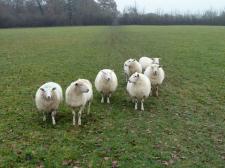CGS-authored

A recent study revealed that sheep created from the same biological matter used to make Dolly, the first cloned mammal, were aging normally and living healthfully – crumbling an apparently widely held impression that cloning created unhealthy animals.
The study comes 20 years after Dolly blurred the lines between science fiction and reality, sparking worldwide debate that spanned the fields of science, ethics and religion over the appropriateness of cloning and whether someday humans would be grown and experimented upon.
And while the recent findings, published in the journal Nature Communications, reinforced scientific conclusions that clones aren't sicker than other animals, they also reflected how in the decades since cloning became a reality, it hasn't really lived up to the promises or the fears that surrounded it.
"People were worried that cloning would be used as a means to harvest organs or to replace people that had died," says Lawrence Brody, director for the Division of Genomics and Society at the National Institutes of Health.
Those opposed to human cloning even today fear narcissists would employ the procedure...



